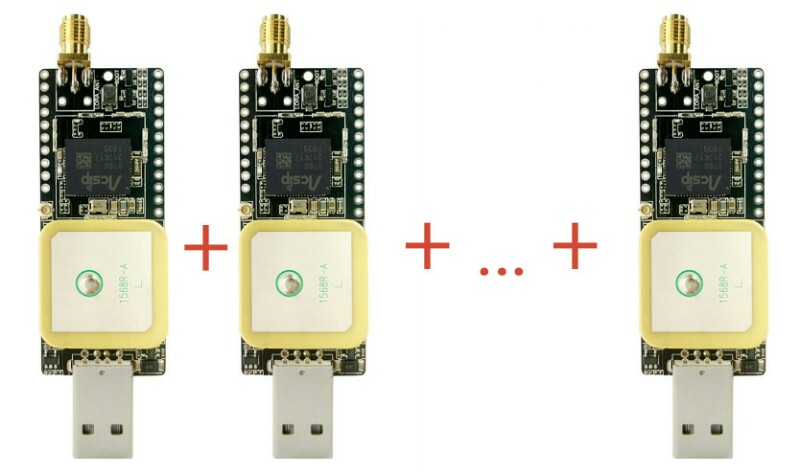-
Notifications
You must be signed in to change notification settings - Fork 222
Octave Concept
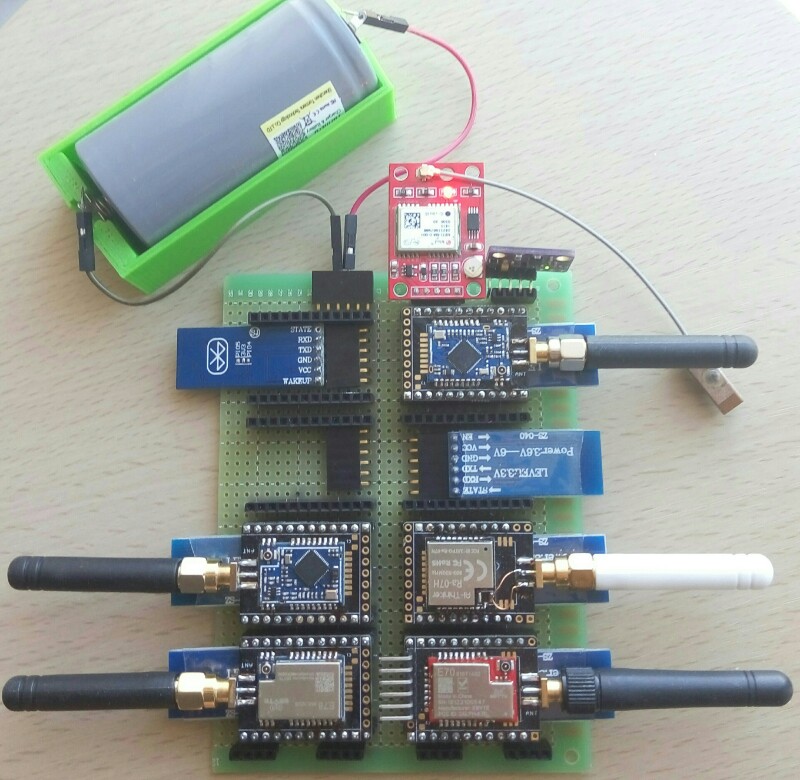
The Octave Concept is an experimental SoftRF design which purpose is to operate with every of air traffic radio protocols within a single device.
It can use up to eight independent radio modules, each of them can transmit and receive. Operation over ISM bands (439-470 MHz, 868-915 MHz) is provided by Ebyte E78 component(s). Operation over UAT 978 MHz band - by Ebyte E70 one.
NMEA data from single GNSS module (uBlox or MediaTek based) is shared across every of the radio module connected. BMP280 I2C air pressure sensors and HC-05 UART-to-Bluetooth wireless adapters are bound to every module as a per-node resource.
Mix of air traffic data coming from every node is to be done at application level. There are certain EFB apps that can do this in software. One known good example is XCSoar 7. It was already explained before on how to mix two streams from different SoftRF devices. However, the XCSoar 7 can actually handle up to six NMEA sources simultaneously...
| Type | Protocol | FLARM | OGN tracker | PilotAware | Skytraxx | SoftRF |
|---|---|---|---|---|---|---|
| Radio | FLARM AIR V6 |
|
|
|
||
OGNTP |
|
|
||||
P3I |
|
|
||||
978 UAT |
|
|||||
FANET+ |
|
|
||||
SRD 860 |
|
|
||||
|
||||||
| Data | FLARM NMEA |
|
|
|
|
|
| Garmin GDL90 |
|
|
||||
Dump1090 |
|
1 - it is necessary for a reader to distinguish the difference between statement "compatible"
and statement "fully compatible".
SoftRF implements only a reasonable minimum of the protocols specs.
No "bells and whistles" so far ;
2 - Reception of traffic 'downlink' frames only.
SoftRF firmware for Octave Concept is distributed in the hope that it will be useful, but WITHOUT ANY WARRANTY; without even the implied warranty of MERCHANTABILITY or FITNESS FOR A PARTICULAR PURPOSE.
Be aware that certain old Android versions can not handle more that two Bluetooth SPP connections at the same time.
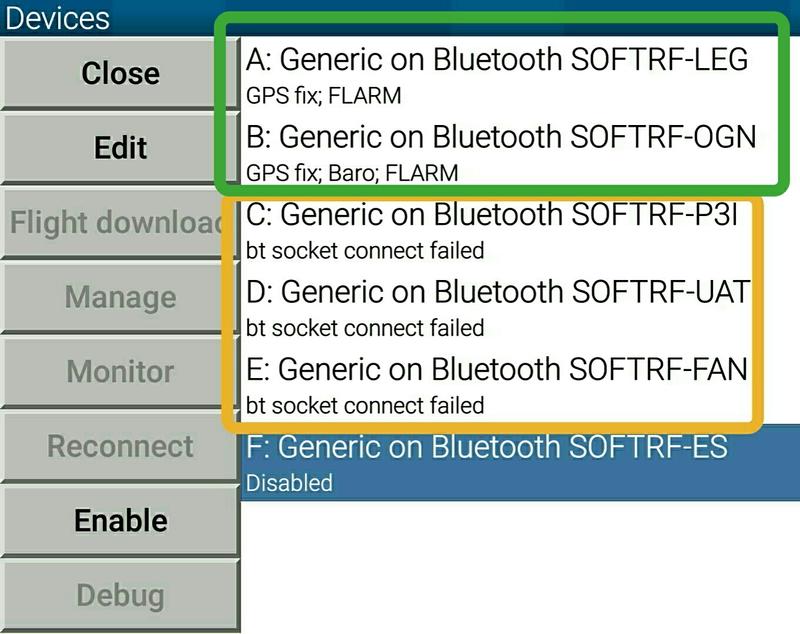
However it is no longer a factor for the recent Android releases, such as Android 11:
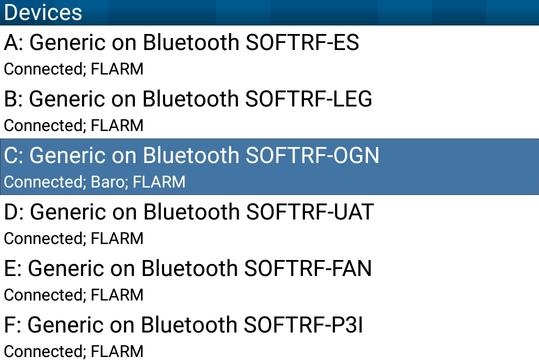
It was also confirmed that the Octave Edition can operate with XCSoar 7 for Linux as well:
$ hcitool scan
Scanning ...
20:17:03:06:09:81 SOFTRF-OGN
20:17:02:27:04:01 SOFTRF-FAN
20:17:03:06:06:44 SOFTRF-LEG
20:16:10:31:77:28 SOFTRF-P3I
20:17:03:13:14:40 SOFTRF-UAT
$ sudo rfcomm bind rfcomm0 20:17:03:06:06:44
$ sudo rfcomm bind rfcomm1 20:17:03:06:09:81
$ sudo rfcomm bind rfcomm2 20:17:03:13:14:40
$ sudo rfcomm bind rfcomm3 20:17:02:27:04:01
$ sudo rfcomm bind rfcomm4 20:16:10:31:77:28
$ rfcomm
rfcomm0: 20:17:03:06:06:44 channel 1 clean
rfcomm1: 20:17:03:06:09:81 channel 1 clean
rfcomm2: 20:17:03:13:14:40 channel 1 clean
rfcomm3: 20:17:02:27:04:01 channel 1 clean
rfcomm4: 20:16:10:31:77:28 channel 1 clean
$ stty -F /dev/rfcomm0 raw
$ stty -F /dev/rfcomm1 raw
$ stty -F /dev/rfcomm2 raw
$ stty -F /dev/rfcomm3 raw
$ stty -F /dev/rfcomm4 raw
$ xcsoar
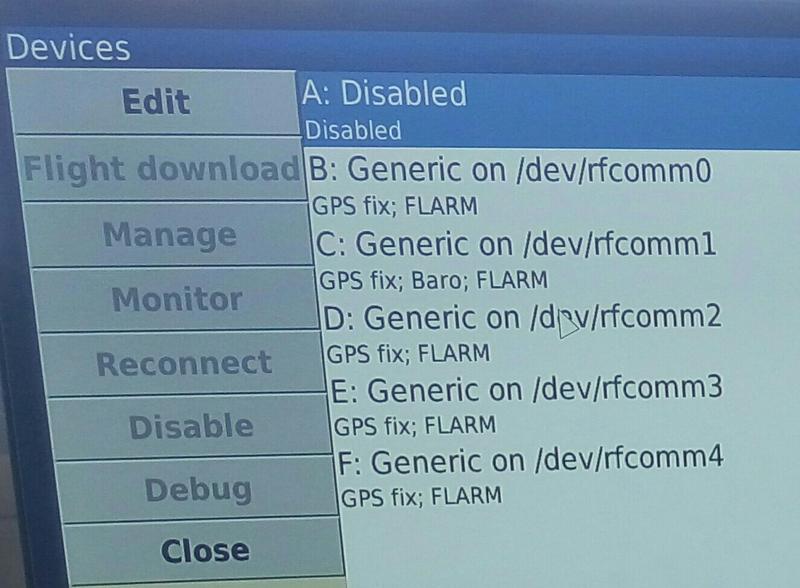
We remind to everyone that the Octave is a concept which purpose is to meet our own goals.
No doubts that there are only a few individuals in the world that have a wish and sufficient skills level to build the device by themselves. We are pretty much sure that supplied materials, such as:
- idea
- picture
- SoftRF source code
- SoftRF firmware binaries for E78 and E70 modules
- E7x breakout PCB
are sufficient for an experienced user to reproduce the design.
For the rest of the world we recommend to use multiple SoftRF Dongle Edition devices to achieve the multi-protocol operation.
